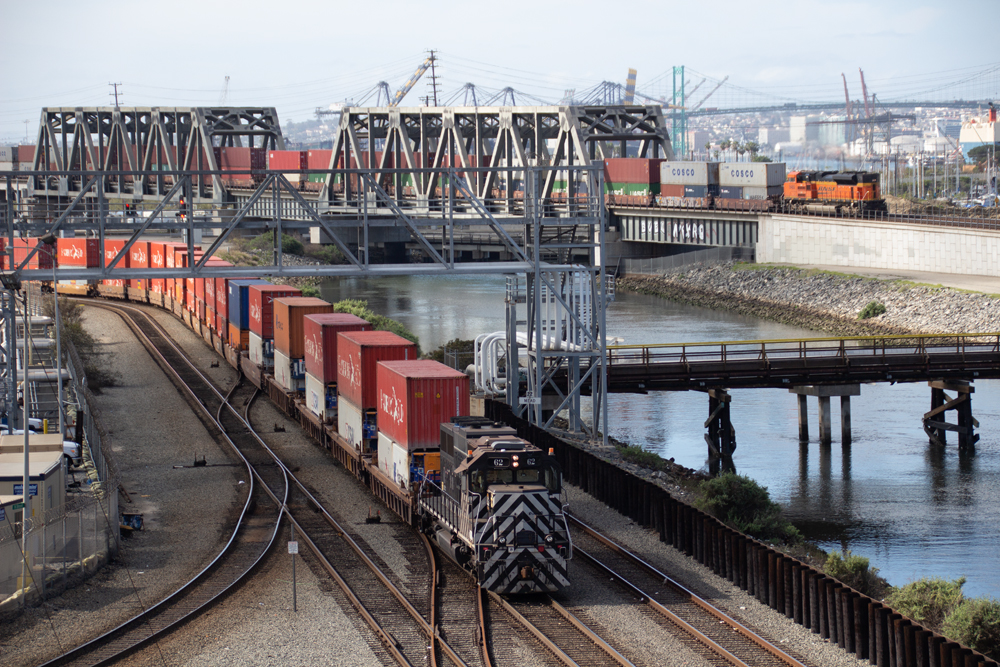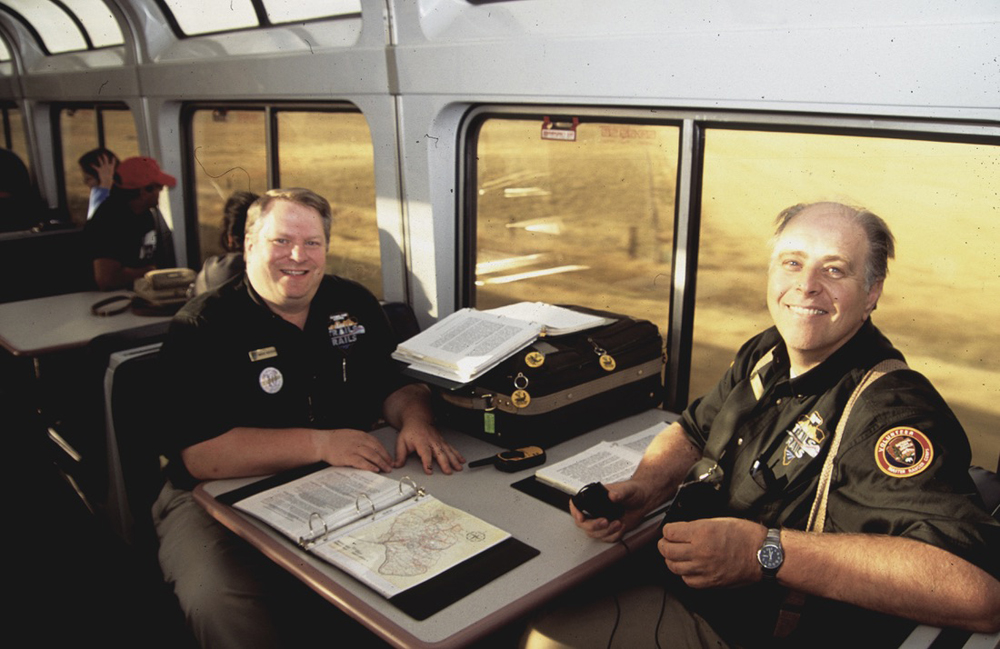
WASHINGTON — With a dockworkers strike looming at East Coast and Gulf Coast ports, Surface Transportation Board Chairman Robert E. Primus has asked BNSF Railway and Union Pacific to provide regulators with information on how they will handle the anticipated surge in container traffic at West Coast ports.
“While I understand that a pivot to address these increased volumes is not without strain on the supply chain, including your railroad, it is essential that rail not become a choke point in this critical time,” Primus wrote in letters dated Sept. 24. “To that end, as soon as possible please provide me with information on your preparedness to handle the volume shifts.”
Specifically, Primus asked the railroads for their plans to provide reliable service, how they will allocate resources to West Coast ports, and how the railroads are sharing information with port officials.
The International Longshoremen’s Association and the United States Maritime Alliance, which represents ports from Maine to Texas, are at an impasse in their contract talks. The union says it’s prepared to walk out on Oct. 1. President Joe Biden has said he will not invoke the Taft-Hartley Act to end a strike.
Importers have been adjusting their plans this year due to a series of global disruptions that include threats to shipping in the Red Sea, low water levels in the Panama Canal, and potential rail strikes in Canada and at ports on the U.S. East Coast and Gulf Coast.
As a result, retailers have in some cases accelerated their holiday season imports to arrive before a labor disruption. In other cases, they have shifted cargo to the West Coast.
The biggest ports, at Los Angeles and Long Beach, have seen a surge in containers that’s on par with the levels seen during the pandemic-related boom in imports in late 2020 and 2021. The Port of Long Beach set an August record for container volume.
Primus said it is imperative that BNSF and UP are positioned to handle current volume shifts as well as the potential boost in container volume if there’s a dockworkers strike on the East Coast.
UP handled record container tonnage from West Coast ports in August and likely will set a record this month, Kari Kirchhoefer, senior vice president of the railroad’s premium traffic segment, said during the railroad’s investor day last week.
She also said that the railroad was working closely with the ports of Los Angeles and Long Beach in anticipation of a further shift in container volume back to the West Coast.














The Panama Canal needs to be widened and deepened to sea level, (like the Suez Canal), to avoid drought conditions from draining fresh water from the rain forests and sending it out to sea. Either that or build a new sea level canal somewhere else in Central America.
Not economically viable. Also Gatun Lake supports more than just passing ships. Before the canal was built, the rain water simply ran off to the sea regardless, so I am not sure the remark of “draining” reflects what really happens.
Also a little known fact is “sea level” is not identical on each coast due to variances in tidal actions and ocean currents. It would probably create a massive amount of current through the opening making it hazardous for ships to transit.
2 things are happening in response, The Canal Authority is building new mechanical ponds that recycle water for a lock passing, meaning less fresh water is used relative to the number of ships.
Next, Mexico is upgrading the rail between the Pacific port of Salina Cruz and the Altantic port of Coatzacoalcos to operate a transcon service as an alternate to the Panama based rail service.
Read a report that retailers are up to 80% of the pre holiday inventory already in the warehouses or on last mile (off the boats and on the highway & tracks headed to the warehouse). I can see the West Coast uptick but also not as much as might be expected.
..
I think the Mexico ports are significantly underdeveloped on Pacific side so see the gainer being up north with CN and CPKC sending a few more stack trains from British Columbia to Chicago. Plus, don’t forget that you could see a few more containers headed to Canadian Maritimes out East picking up some of the slack as well.
”
Finally, doesn’t BNSF have direct access to Port of Vancouver, Canada? Not sure if that includes container terminals or not? BNSF could be sending a few more stack trains across the norther hi line.
Wonder if the same request is being made of all trucking firms serving the ports.
I have the answer. Just sidetrack Amtrak until the surge is over. Oh wait, that’s about what they do now.
Better the STB should be asking about how draymen will respond. That is the weak link in the supply change, as the last such episode showed.
Of course, there are thousands of such drivers, unregulated, with little power, and not so easy to ‘pick on’, as are just two railroads.
Recall in the last such episode, when Katie Farmer of BNSF responded to Secretary Buttigieg’s accusations, that BNSF was holding out 30 trains destined for Chicago, because the pieces weren’t being picked up. Maybe Pete learned a bit about this complicated system.
Good points on delivery end w draymen/trailers to take containers once they arrive. Also, both Port of LA & Long Beach have been expanding and building out their dockside rail capacity which I believe has increased significantly but also ongoing as not sure if all the projects have been competed to date.
I wonder, too, about CPKC and its Mexican port. Could this also see a significant increase in volume?
Would be interested in knowing how CN and CPKC will respond as well. They serve both the Atlantic and Pacific ports.